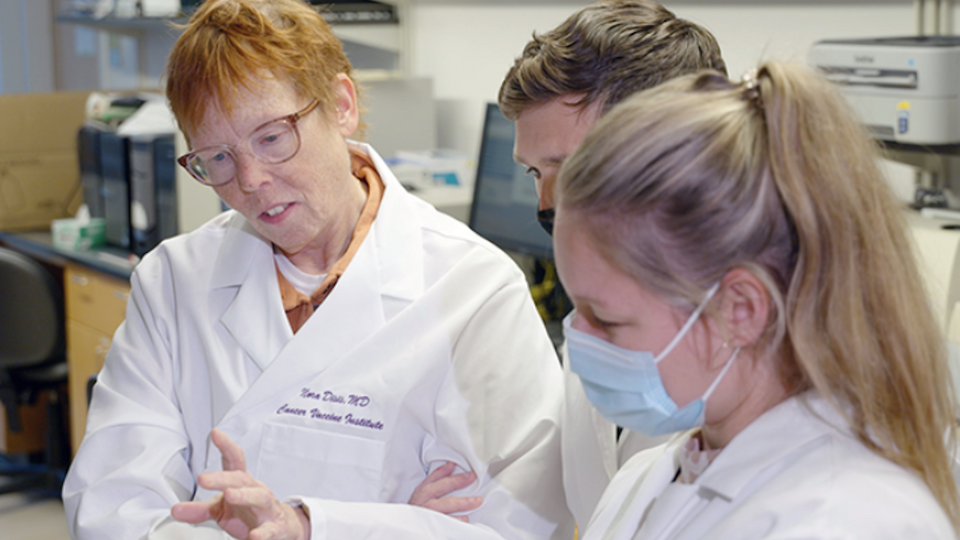[ad_1]
Researchers have been capable of create an immune response in sufferers with a vaccine towards a cancer-causing protein in section I trials.

(Randy Carnell / College of Washington)
Researchers from the College of Washington Faculty of Medication (UWSM) in Seattle report that the breast most cancers vaccine they’ve been working for over the previous 20 years was efficient, producing a robust immune response to an aggressive tumour protein.
They printed their findings within the JAMA Oncology journal lately, and revealed the outcomes of the section I human trials of the vaccine they got here up with.
Why is breast most cancers analysis necessary?
The World Well being Group notes that whereas breast most cancers could be handled successfully, particularly when recognized early, it’s fairly a widespread illness: “As of the tip of 2020, there have been 7.8 million ladies alive who have been recognized with breast most cancers up to now 5 years, making it the world’s most prevalent most cancers.”
The Nationwide Breast Most cancers Basis, a charity primarily based in america, estimates the variety of deaths from breast most cancers within the US at 43,550 ladies and 530 males in 2022 (males are also inclined to breast most cancers, though at a a lot decrease charge).
Based on the inspiration, “Breast most cancers is the commonest most cancers in American ladies, apart from pores and skin cancers. It’s estimated that in 2022, roughly 30% of all new ladies’s most cancers diagnoses will likely be breast most cancers.”
Why is the HER2 protein a goal for analysis?
The Nationwide Most cancers Institute (of america) notes that HER2 protein contributes to the unfold of breast most cancers, and that scientists for the previous forty years have been engaged on limiting the genetic expression of the protein to curb the illness.
“Within the early Eighties, after the invention {that a} mutated gene known as HER2 may stimulate extreme cell development and division, many scientists puzzled if sure genes would possibly make cancers develop and unfold quickly,” the institute says on its web site. “Researchers all over the world started looking for genes that spur most cancers development.”
Through the years, researchers got here up with most cancers medication that goal to dam HER2 to sluggish the expansion of HER2-positive breast most cancers. But, as NCI experiences, “Regardless of these successes, many ladies with breast most cancers don’t profit from present HER2-targeted therapies, or they turn into proof against the consequences of those medication after preliminary therapy.”
That’s the reason researchers to this date maintain engaged on countering the consequences of HER2 protein on breast most cancers.
How does the brand new UWSM vaccine work?
HER2-positive breast most cancers will not be hereditary however it’s a tough illness to deal with as a result of there may be excessive danger of recurrence. The UWSM researchers found that one of these most cancers didn’t reoccur in sufferers whose immune programs had been triggered to offer a response.
Based on a UWSM news release, “sufferers with HER2-positive breast cancers who mount a kind of immune response known as cytotoxic — or cell-killing — immunity are much less more likely to see their most cancers recur after therapy and have longer general survival than those that don’t mount such an immune response.”
Dr. Nora Disis and her colleagues created a DNA vaccine: “In contrast to protein vaccines, which generally include a protein or a part of a protein that you really want the immune system to focus on, DNA vaccines include the DNA directions for the goal protein.”
They have been anticipating to see a robust cytotoxic immune response to the HER2 DNA contained inside the vaccine.
What was the trial?
The researchers recruited 66 feminine sufferers who had metastatic most cancers. They separated them into three teams, and injected them thrice with 10 micrograms, 100 micrograms, and 500 micrograms of the vaccine respectively.
The sufferers have been monitored “for 3 to 13 years (median follow-up was almost 10 years).”
What was the results of the trial?
“The outcomes confirmed that the vaccine was very protected,” Disis mentioned. “Actually, the commonest unwanted effects that we noticed in about half the sufferers have been similar to what you see with COVID vaccines: redness and swelling on the injection website and perhaps some fever, chills and flu-like signs.”
Based on the researchers, the vaccine improved the life expectancy of the trial individuals – “about half of whom could be anticipated to die inside 5 years of therapy”.
“We’ve now adopted these ladies for ten years and 80% of them are nonetheless alive,” Disis famous.
Supply: TRTWorld and companies
[ad_2]
Source link


